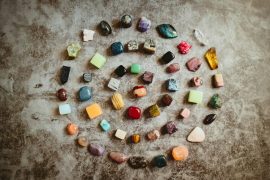When it comes to buying a diamond, there are several factors to consider before making a purchase. One common misconception is that the authenticity of a diamond can be determined by how it glows in different lighting conditions. However, this is not always the case. In this post, readers will gain a deeper understanding of why diamonds glow in the dark and what this means for potential buyers.
This article aims to provide readers with all the necessary information about diamonds and their glowing properties. By the end of this post, readers will be equipped with the knowledge needed to make informed decisions when purchasing a diamond.
Do Real Diamonds Glow in the Dark?
Some real diamonds can emit a glow in low light conditions, a phenomenon known as fluorescence. Under UV light, certain diamonds may emit a blue, yellow, green, or orange glow. However, not all real diamonds exhibit fluorescence. According to the Gemological Institute of America, more than 30% of diamonds have some level of fluorescence, but this characteristic has nothing to do with whether the diamond is real or fake. Therefore, it is important to note that while some real diamonds may glow in the dark, not all of them do, and fluorescence is not an indicator of a diamond’s authenticity.
Do Lab-Created Diamonds Glow in the Dark?
Lab-created diamonds have similar properties to naturally mined ones, including the ability to glow in the dark. This is due to the submicroscopic structures within the diamond, which can cause fluorescence or phosphorescence.
Impurities like nitrogen in lab-created diamonds can cause them to glow in the dark. Additionally, lab-created diamonds that fall under the Type IIb category, which have a considerable amount of boron, also glow in less light. These diamonds will glow when exposed to UV light and the glow can continue for a few seconds or minutes when the diamond is no longer exposed to UV light.
It is important to note that the glow of lab-created diamonds is different from the rare colors of fluorescence that they display when subjected to UV light, such as light blue, white, or orange-yellow.
In summary, lab-created diamonds can indeed glow in the dark, just like naturally mined diamonds. The type and amount of impurities within the diamond can affect the intensity and duration of the glow.
Do Fake Diamonds Glow in the Dark?
There is a common misconception that fluorescence is a reliable indicator of whether a diamond is real or fake. However, this is not entirely accurate since both real and some fake diamonds can glow in the dark.
It is important to note that not all fake diamonds will glow in areas with less light. Some naturally mined diamonds lack fluorescence and may not glow in the dark. Therefore, it is not advisable to determine a diamond’s authenticity based solely on its fluorescence.
To determine whether a diamond is real or fake, it is recommended to seek a professional appraisal from an experienced and certified gemologist. They can provide a more accurate assessment of the diamond’s authenticity.
Alternatively, one can focus on the quality of the diamond, using the four C’s defined by the Gemological Institute of America: carat, cut, clarity, and color. These factors can help distinguish between a real and fake diamond.
It is also crucial to work with a reputable jeweler when buying diamonds to avoid purchasing a fake diamond. In conclusion, while some fake diamonds may glow in the dark, it is not a reliable indicator of a diamond’s authenticity, and one should seek professional appraisal or focus on the diamond’s quality to determine its authenticity.
Why Does My Diamond Glow in the Dark?
Fluorescence
One of the main reasons why a diamond can glow in the dark is due to fluorescence. When exposed to ultraviolet (UV) light, the diamond emits the energy it absorbed, causing it to glow. This phenomenon is common in black lighting conditions like those found in nightclubs or under fluorescent bulbs.
The intensity of fluorescence can vary, and if a diamond falls under the very strong category, it may appear blurry when viewed under intense sunlight. When shopping for a diamond, it is recommended to compare fluorescent and non-fluorescent diamonds to gauge any differences in clarity and color.
Chemical Impurities
Another reason why a diamond can glow in the dark is due to the presence of specific chemical impurities. Chemical elements such as aluminum, nitrogen, and boron can cause a diamond to glow when exposed to UV light. The concentration of these impurities can affect the intensity of the glow.
While chemical impurities can lower a diamond’s value, they can also make it more affordable. Diamonds that glow in the dark due to chemical impurities can be purchased at a lower cost than those without this feature. It is important to note that the presence of chemical impurities does not necessarily affect the diamond’s strength and hardness.
Lab-Created Diamonds
Lab-created diamonds have similar chemical and physical properties as natural diamonds. These diamonds are made under controlled lab conditions instead of being mined from the earth’s surface. Some lab-created diamonds tend to glow in areas with less light.
Type IIb Diamonds
Diamonds are classified into two groups, and those that fall under the Type IIb category can glow in the dark. These diamonds often glow for a while, and the color of the glow can be blue, fiery red, or pink. While such diamonds are stunning, they can be rare.
Overall, the glow of a diamond in the dark can be attributed to factors such as fluorescence, chemical impurities, lab creation, and diamond type. Understanding these factors can help buyers make informed decisions when purchasing a diamond.
What Does It Mean When a Diamond Glows in the Dark?
When a diamond glows in the dark, it is due to the presence of other minerals in the diamond. During the crystallization process, certain elements such as boron and nitrogen are left in the diamond, leading to fluorescence. The strength of fluorescence can vary from very strong to none at all, according to GIA grading reports.
It is essential to consider fluorescence as an important characteristic when buying a diamond. The fluorescence can affect the diamond’s appearance, making it appear foggier than those with faint fluorescence. Therefore, it is crucial to assess the diamond under different light conditions before making a purchase.
Understanding the difference between fluorescence and clarity is also crucial when buying a diamond. Diamonds with strong fluorescence tend to have lower clarity grades, and it is essential to assess both characteristics before making a purchase.
In summary, when a diamond glows in the dark, it is due to fluorescence caused by the presence of other minerals in the diamond. It is essential to consider fluorescence along with other characteristics such as clarity when buying a diamond.
Conclusion
When shopping for diamonds, it is important to consider more than just fluorescence. While fluorescent diamonds may have a unique glow in low light conditions, they also have their disadvantages, such as appearing hazy. Cut quality is what determines the brilliance of a diamond, so it is important to pay attention to this aspect as well.
Tiger, a knowledgeable fashion and jewelry lover, emphasizes the importance of considering all factors when purchasing diamonds. As a fashion jewelry manufacturer, he has helped thousands of small businesses grow and has worked with big fashion jewelry brands. His expertise in metals and jewelry makes him a reliable source of information for those looking to make informed decisions when shopping for diamonds.




